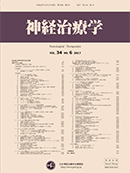Volume 39, Issue 4
Displaying 101-108 of 108 articles from this issue
-
2022 Volume 39 Issue 4 Pages 716
Published: 2022
Released on J-STAGE: December 27, 2022
Download PDF (182K)
-
2022 Volume 39 Issue 4 Pages 717-722
Published: 2022
Released on J-STAGE: December 27, 2022
Download PDF (856K)
-
2022 Volume 39 Issue 4 Pages 723-726
Published: 2022
Released on J-STAGE: December 27, 2022
Download PDF (441K) -
2022 Volume 39 Issue 4 Pages 727-730
Published: 2022
Released on J-STAGE: December 27, 2022
Download PDF (1164K)
-
2022 Volume 39 Issue 4 Pages 731-735
Published: 2022
Released on J-STAGE: December 27, 2022
Download PDF (2230K)
-
2022 Volume 39 Issue 4 Pages 736-739
Published: 2022
Released on J-STAGE: December 27, 2022
Download PDF (338K) -
2022 Volume 39 Issue 4 Pages 741
Published: 2022
Released on J-STAGE: December 27, 2022
Download PDF (145K) -
2022 Volume 39 Issue 4 Pages 742
Published: 2022
Released on J-STAGE: December 27, 2022
Download PDF (131K)
